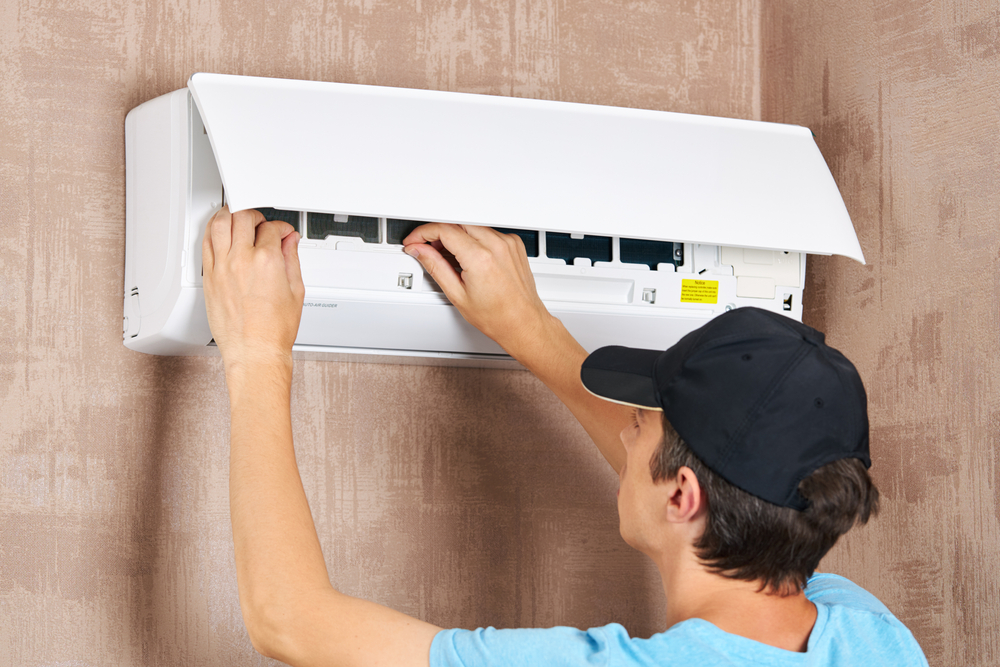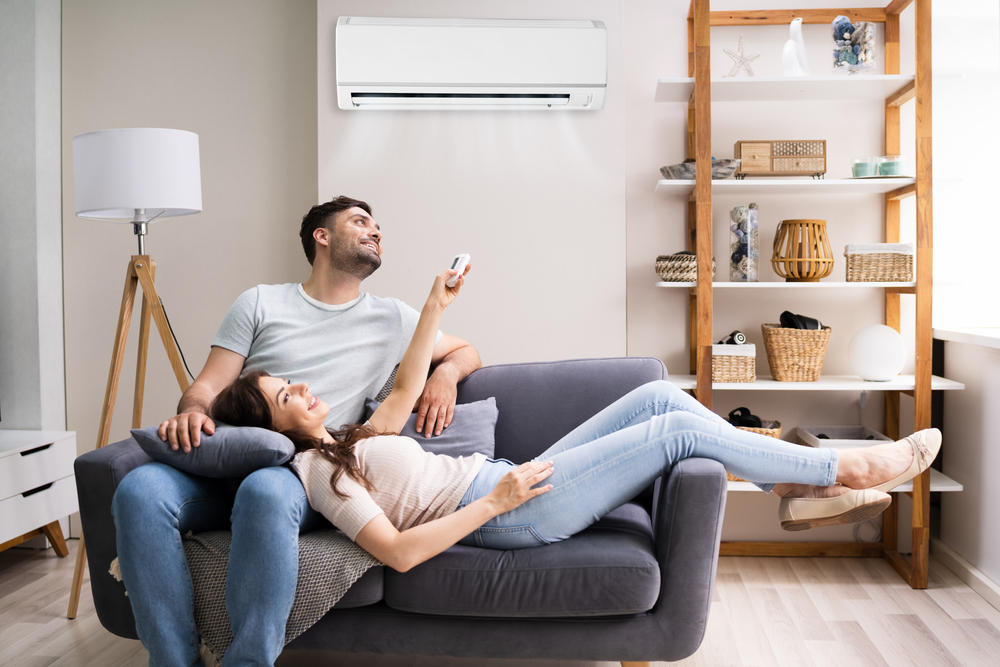
As the winter months continue to bring frigid temperatures across the U.S. and the summer months bring sweltering heat, it’s essential to ensure that your home has a reliable heating and cooling system. One option that has been growing in popularity is ductless air conditioning, also known as a mini-split system. These systems offer many benefits, including energy efficiency, room-by-room temperature control, and ease of installation.
There are generally two options for replacing your HVAC system with a mini-split: professional installation or DIY. While most systems require a technician to attach and charge the refrigerant lines and install the handler and condenser units, a DIY MRCOOL mini split comes with pre-loaded refrigerant lines for an affordable, updated HVAC system. To ensure you choose the right system for your home and install it correctly, use the following tips for a quick and easy way to improve your home’s heating and cooling.
What Is Ductless Air Conditioning?
Ductless air conditioning, also known as a mini-split system, is a type of HVAC system that uses a small outdoor unit (condenser) and one or more indoor units (handler) to cool or heat your home. Unlike traditional HVAC systems, mini-split systems do not require ductwork to transport air throughout your home. Instead, they use small tubes to connect the indoor and outdoor units, making them an excellent option for homeowners who want to avoid costly renovations to install ducts or the energy loss associated with ductwork.
How Does a Mini Split Work?
Mini split systems use a small outdoor unit containing a compressor to circulate refrigerant between the outdoor and indoor units. The indoor units, which can be mounted on a wall or ceiling, blow air over the evaporator coil, which cools or heats the air, depending on the season. The cooled or heated air is circulated back into the room, providing comfortable temperature control.
Benefits of a Ductless Mini Split System over Traditional HVAC Systems
When replacing your heating and cooling system, the ductless mini-split system is one of the most popular options. Here are some benefits of choosing a ductless mini-split system over a traditional HVAC system:
Energy Efficiency
Ductless mini-split systems are up to 30% more energy efficient than traditional HVAC systems. This is because they use individual air handlers in each room, allowing you to control the temperature in each room separately. This means you don’t have to waste energy heating or cooling rooms that are not in use, which can result in significant energy savings over time, depending on the SEER rating.
Cost Savings
Unlike traditional HVAC systems, which require ductwork to be installed throughout your home, ductless mini-split systems only need a small hole to be drilled into the wall to connect the indoor and outdoor units. This can reduce installation costs, especially if you’re replacing an existing system.
Room-by-Room Temperature Control
This means you can set different temperatures for each room, allowing you to customize the temperature to your specific preferences. This can be especially helpful if you have family members with different temperature preferences or if you want to heat or cool specific rooms in your home.
Improved Air Quality
Traditional HVAC systems can often circulate dust, pollen, and other allergens throughout your home. Ductless mini-split systems, on the other hand, use individual air handlers that filter the air as it enters each room. This can help improve the overall air quality in your home, especially if you or your family suffer from allergies or respiratory issues.
Easy Maintenance
Ductless mini-split systems are much easier to maintain than traditional HVAC systems. Individual air handlers can be easily cleaned and maintained, and filters are easy to replace. This ensures that your system is operating at peak efficiency and can prolong the lifespan of the system.

How to Install Your Mini Split HVAC System
Before installing your mini split system, you’ll need to choose the right one for your home. Consider factors such as the size of your home, the number of rooms you want to heat or cool, and your budget. Some mini-split systems also offer dual or 3-zone mini-split options, allowing you to independently control the temperature in multiple rooms. To install your DIY MRCOOL mini split, you need to:
Choose the Location
Choose a location for the indoor and outdoor units free from obstacles. Ensure the site is suitable for the units and provides enough clearance for proper ventilation and maintenance.
Mount the Indoor Unit
Install the mounting bracket for the indoor unit according to the manufacturer’s instructions. Attach the indoor unit to the bracket and secure it in place.
Install Electrical Wiring
Connect the electrical wiring to the indoor unit. Make sure to follow the manufacturer’s instructions and local codes.
Install the Pre-Loaded Refrigerant Line
Run the pre-loaded refrigerant line from the outdoor unit to the indoor unit. Connect the line to the indoor unit and secure it in place.
Mount the Outdoor Unit
Install the mounting bracket for the outdoor unit according to the manufacturer’s instructions. Attach the outdoor unit to the bracket and secure it in place.
Connect the Refrigerant Line and Electrical Wiring
Connect the refrigerant line and electrical wiring to the outdoor unit. Make sure to follow the local codes carefully.
Test the System
Turn on the system and test it to ensure it works correctly. Check for any air leaks, unusual noises, or other issues.

Take the Next Step
Replacing your heating and cooling system with a ductless mini-split system can be a great way to improve your home’s comfort and energy efficiency. If you’re considering a mini-split system for your home, choose a reputable manufacturer such as MRCOOL, which offers a variety of high-quality systems, like the dual zone mini split, to fit your needs and budget. With proper installation and maintenance, a mini-split system can provide reliable temperature control for years of comfort.

